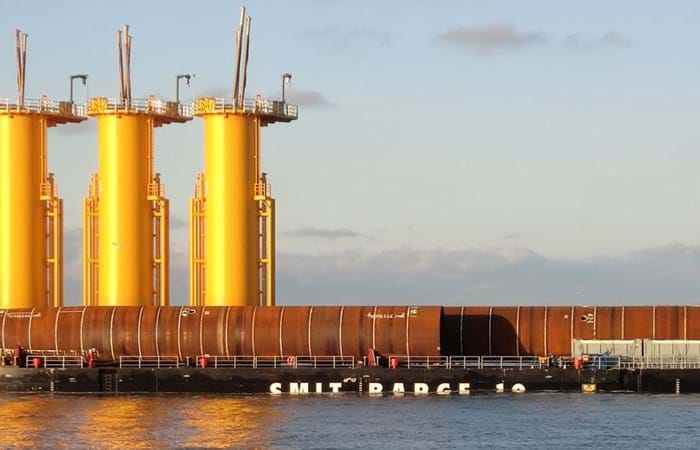SMIT Transport is transporting the wind turbine foundations for the new Lincs Offshore Windfarm, situated off Great Yarmouth, UK. When completed, the windfarm will consist of 75 turbines capable of generating sufficient power to meet the annual demand of some 200,000 households.
During the months April to November 2011, three Smit barges transported the wind turbine foundations, consisting of monopiles and transition pieces, from Hoboken and Flushing to Great Yarmouth. On site, the foundations were discharged by an installation vessel. Three B Class multipurpose vessels, the Smit Bison, Smit Beluga and Smit Buffalo, supported the loading and ballasting operations. In November, SMIT’s participation in the project was extended for another six months. During this period, SMIT was transporting transition pieces for the turbines from Hoboken to Flushing.
Role of SMIT Transport
SMIT Transport was required to provide a full range of marine logistics and engineering services. SMIT’s scope of work included the design, engineering and fabrication of sea fastenings for the monopiles and transition pieces. Also included within the contract package is marine project management support, documents control, SHE-Q and associated engineering and supervisory tasks, all to the approval of the client and warranty surveyor. This covers, inter alia, the Transportation/Ballasting Manuals, mooring plans, voyage plans and stability calculations.
